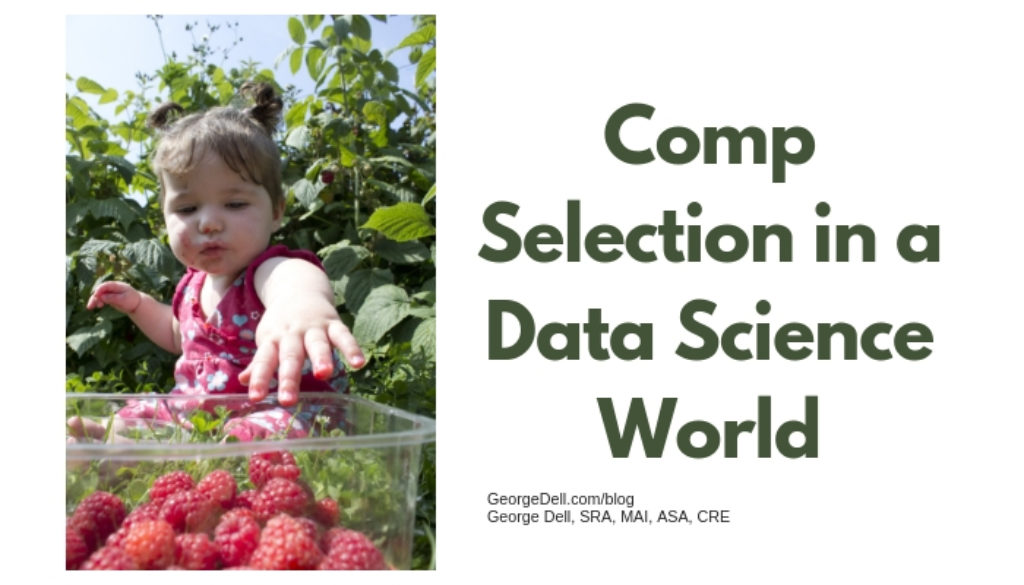Daddy, how do You pick comps?
We asked about comp selection in today’s “big data” world. We considered why we used three comps on a form, or put six comps on an accountant’s spreadsheet.
But what are the different ways appraisers use to pick comps? We can use “good judgment” to pick comps. Or we can rely on the market itself data to objectively tell us what is competitive. Which is superior? – good judgment, or market data itself?
Before the days of instant electronic data, collecting it was the big chore. Because of that, data was also the most valuable asset of an appraiser. It was the biggest reason you had to start as an apprentice to someone who knew how to get data. It was more about who you knew, and what you had in several years of files. There was no data to buy. We went to chapter meetings to trade comps and learn from each other. The social media was the monthly meeting.
That was then.
In the last posting, we asked: “What is the ideal data set?” Is it three, six, or something different? The answer is: “It depends.” It depends on the subject. It depends on what is available – what actually directly competed for buyers’ attention during exposure time.
It depends on the subject. What matters is the competitive market data set, no more, no less. The Appraisal of Real Estate (Appraisal Institute, 14th. ed., p.99): “The more precision required in the analysis, the more likely that additional data will result in more reliable results… it is almost always best to use the largest populations of data that can be assembled practically.”
USPAP requires that we analyze “such comparable sales as are available.” It does not say the best 3, the best 6, or 25 ‘good ones’. This jives nicely with what we have learned – that the ideal data set includes all competitive sales, and no more. This coincides with the AI use of the word “population.” The population is the competitive market segment of similar sales.
The ideal data set provides as much input as possible, without including noisy garbage. There is a sweet spot. This is another underlying principle of EBV*. Evidence Based Valuation relies on an ideal data set, regardless of size.
It appears that if our objective is accuracy and precision in the estimate of value – the analytic data set should include all directly competitive market data, and no more.
Two principles:
1) Ideal data set — (the complete set of directly competitive sales);
2) Objectively defined – (by five components of competitiveness).
*© EBV (Evidence Based Valuation) — George Dell 2017

February 16, 2017 @ 7:27 am
Thank you George for sharing. I look forward to hearing you explore today’s selection of comparable sales.
February 16, 2017 @ 8:19 am
I wait until the comps are ripe before I pick them. I also make certain that they are on the same tree as the Subject property.
February 17, 2017 @ 6:30 am
“I also make certain that they are on the same tree as the Subject property” is a nice rephrase of choosing the ideal data set, but, Steven, the question I see George addressing is how should one make certain the comps are on the same tree as the subject property. Are you using your judgement, some objective method, or both?
October 23, 2018 @ 1:18 pm
THANKS CHARLIE!
I like your tree metaphor.